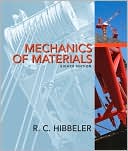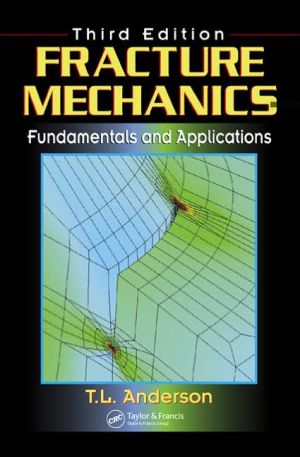Tribology on the Small Scale: A Bottom Up Approach to Friction, Lubrication, and Wear
Friction, lubrication, adhesion, and wear are prevalent physical phenomena in everyday life and in many key technologies. This book explains how these tribological phenomena originate from atomistic and microscale physical phenomena and shows how this understanding can be used to solve macroscale tribology problems. The book is intended to serve both as a textbook for advanced undergraduate and graduate courses in tribology and as an introduction to the field for those scientists and...
Search in google:
Friction, lubrication, adhesion, and wear are prevalent physical phenomena in everyday life and in many key technologies. This book explains how these tribological phenomena originate from atomistic and microscale physical phenomena and shows how this understanding can be used to solve macroscale tribology problems. The book is intended to serve both as a textbook for advanced undergraduate and graduate courses in tribology and as an introduction to the field for those scientists and engineers working with technologies where a good grasp of tribology is essential.
Introduction 1Why is it called tribology? 2Economic and technological importance of tribology 3Some tribology success stories 4Reducing automotive friction 4MEMS and solving adhesion in Digital Micro-mirror Devices 5Slider-disk interfaces in disk drives 7A brief history of modern tribology 10Scientific advances enabling nanoscale tribology 12Breakthrough technologies relying on tribology at the small scale 14Nanoimprinting 16IBM's millipede for high density storage 18Nanotechnology 19References 20Characterizing surface roughness 24Types of surface roughness 24Roughness parameters 26Variations in Z-height 26Asperity summits roughness parameters 28Surface height distributions 29Measuring surface roughness 30Atomic force microscopy (AFM) 30Example: Disk surfaces in disk drives 33References 37Mechanical properties of solids and real area of contact 39Atomic origins ofdeformation 39Elastic deformation 43Basic relations 43Elastic deformation of a single asperity 44Approximating a single asperity contact 44Elastic contact area for a sphere on a flat 45Example: Spherical steel particle sandwiched between two flat surfaces 46Plastic deformation 48Basic relations 48Hardness 49Real area of contact 50Greenwood and Williamson model 51Example: TiN contacts 53Real area of contact using the Greenwood and Williamson model 54Example: Recording head on a laser textured disk surface 55Inelastic impacts 59References 61Friction 63Amontons' and Coulomb's laws of friction 63Adhesion and plowing in friction 66Adhesive friction 66Plowing friction 68Work hardening 70Junction growth 70Static friction 72Stick-slip 74Velocity-controlled stick-slip 75Time-controlled stick-slip 77Displacement-controlled stick-slip 78References 81Surface energy and capillary pressure 82Liquid surface tension 82Capillary pressure 85Capillary pressure in confined places 87The Kelvin equation and capillary condensation 90Example: Capillary condensation of water in a nanosized pore 91Example: Capillary condensation of an organic vapor at a sphere-on-flat geometry 91Interfacial energy and work of adhesion 92Surface Energy of Solids 93Why solids are not like liquids 93Experimental determination of a solid's surface energy 95Contact angles 96Estimating interfacial energies 97Zisman method for estimating surface energy for a solid 98Types of wetting 101Contact angle measurements 101Contact angle hysteresis 103Adhesion hysteresis 104References 110Surface forces derived from surface energies 113The Derjaguin approximation 113Dry environment 114Force between a sphere and a flat 114Example: Adhesion force between two polystyrene spheres 115Example: Adhesion force between a polystyrene sphere and a PTFE Flat 115Example: Adhesion force for an atomically sharp asperity 116Adhesion-induced deformation at a sphere-on-flat contact 117The Johnson-Kendall-Roberts (JKR) theory 117The Derjaguin-Muller-Toporov (DMT) theory 121Adhesion deformation in nanoscale contacts 121Wet environment 122Force for a sphere-on-flat in a wet environment 122Example: Lubricant meniscus force on an AFM tip 123Solid-solid adhesion in the presence of a liquid meniscus 125Water menisci in sand 126Meniscus force for different wetting regimes at contacting interfaces 128Toe dipping regime 128Example: Toe dipping adhesion with exponential distribution of summit heights 129Pillbox and flooded regimes 131Immersed regime 132Example: Liquid adhesion of a microfabricated cantilever beam 133References 135Physical origins of surface forces 137Normal force sign convention 137Repulsive atomic potentials 138Van der Waals forces 139Van der Waals forces between molecules 139Retardation effects for dispersion forces 142Van der Waals forces between macroscopic objects 142Molecule-flat surface interaction 142Flat-Flat interaction 144Sphere-flat interaction 145The Hamaker constant 145Determining Hamaker constants from Lifshitz's theory 146Example: Van der Waals force on a polystyrene sphere above a Teflon flat 151Surface energies arising from van der Waals interactions 152Van der Waals adhesive pressure 153Van der Waals interaction between contacting rough surfaces 154Example: Stuck microcantilevers 156Example: Gecko adhesion 158Van der Waals contribution to the disjoining pressure of a liquid film 160Liquid-mediated forces between solids 162Solvation forces 162Example: Squalane between smooth mica surfaces 164Oscillatory solvation forces at sharp AFM contacts 166Forces in aqueous medium 167Electrostatic double-layer force 167Hydration repulsion and hydrophobic attraction 169Contact electrification 171Mechanisms of contact electrification 172Conductor-conductor contact 172Example: Recording head slider flying over a disk in a disk drive 175Metal-insulator and insulator-insulator Contacts 177AFM studies of contact electrification 179References 181Measuring surface forces 186Surface force apparatus 188Atomic force microscope 192Examples of forces acting on AFM tips 195Van der Waals forces under vacuum conditions 195Capillary condensation of contaminants and water vapor 197Bonded and unbonded perfluoropolyether polymer films 200Electrostatic double-layer force 202References 204Lubrication 207Lubrication regimes 207Viscosity 209Definition and units 209Non-Newtonian behavior and shear degradation 211Temperature dependence 214Fluid film flow in confined geometries 214Slippage at liquid-solid interfaces 216Definition of slip length 217Measuring slip at liquid-solid interfaces 218Pressure drop versus flow rate method 218Drainage versus viscous force 219Mechanisms for slip at liquid-solid interfaces 220Molecular slip 220Molecular slip at low energy surfaces 220Slippage of polymers melts 222Apparent slip 222Example: Shear stress in the presence of slip 225Why does the no-slip boundary condition work so well? 225Fluid film lubrication 226Hydrodynamic lubrication 228Inclined plane bearing 229Rayleigh step bearing 229Journal bearings 230Gas bearings 232Slip flow in gas bearings 234Elastohydrodynamic lubrication 235Pressure dependence of viscosity 235Pressure-induced elastic deformation 236Example: Minimum film thickness between sliding gear teeth 238Experimental measurements of elastohydrodynamic lubrication 239Important physical and chemical properties of lubricants 241Surface tension 241Thermal properties 242References 243Lubrication in tight spots 246Confined liquids 246Boundary lubrication 255Molecular mechanisms of boundary lubrication 256Molecularly thin liquid boundary lubricant layers 260Example of the importance of end-groups in a liquid lubricant film 262Capillary and disjoining pressures 265Disjoining pressure 265Distribution of a liquid film around a pore opening 267Example: Measurement of the disjoining pressure of a perfluoropolyether lubricant 269Lubricant distribution between contacting surfaces 270Meniscus force 272Example: Stiction of a recording head slider 272Calculating meniscus force 273Example: Calculation of stiction force of disk drive sliders in the pillbox regime 275Padded or stiction-free slider 276Liquid menisci at high speeds 278References 279Atomistic origins of friction 284Simple models for adhesive friction 284Atomistic models for static friction 286Frenkel-Kontorova model 287Experimental realizations of ultra-low friction in incommensurate sliding systems 289Tomlinson model 290Example: An AFM tip sliding across an NaCl crystal at ultra-low loads 291Molecular dynamic simulations 295Example: Cold welding 295Why static friction occurs in real-life situations 295Atomic origins of kinetic friction 297Sliding isolated molecules and monolayers across surfaces 297Quartz crystal microbalance 299Example: Xe on Ag(111) 300Movement of a liquid film on a surface with the blow-off technique 301Example: Wind-driven flow of perfluoropolyether lubricants on silicon wafers 302Pinning of an absorbed layer 307References 308Wear 313Simple model for sliding wear 314Major influences on wear rates 317Wear maps 318Mechanisms of wear 319Wear from plastic deformation 319Adhesive wear 320Example: An atomic level simulation of adhesive wear 321Abrasive wear 321Oxidative wear 325Metals 325Carbon overcoats 326Ceramics 326Plasticity at the nanoscale 327References 329Index 331








